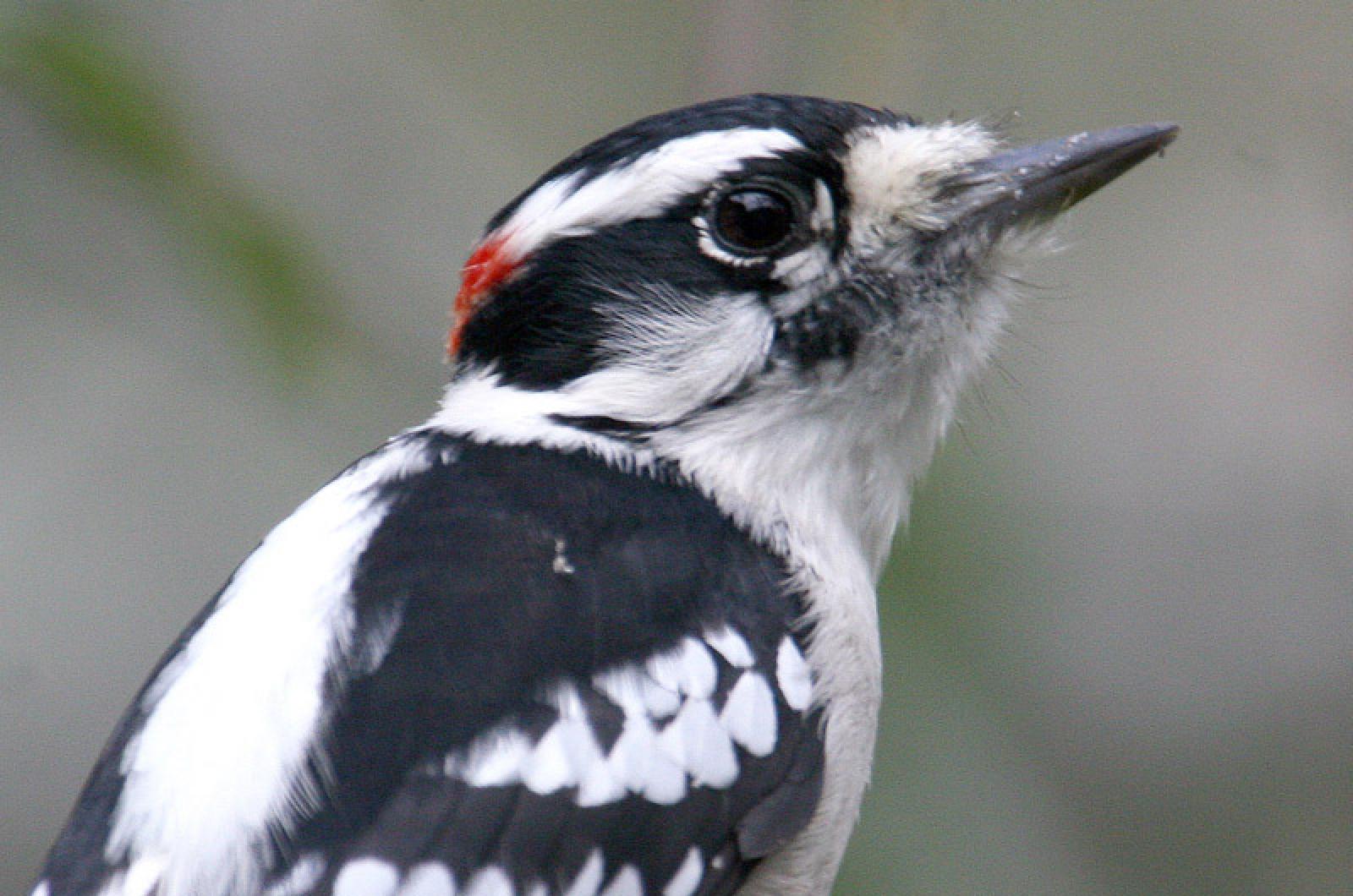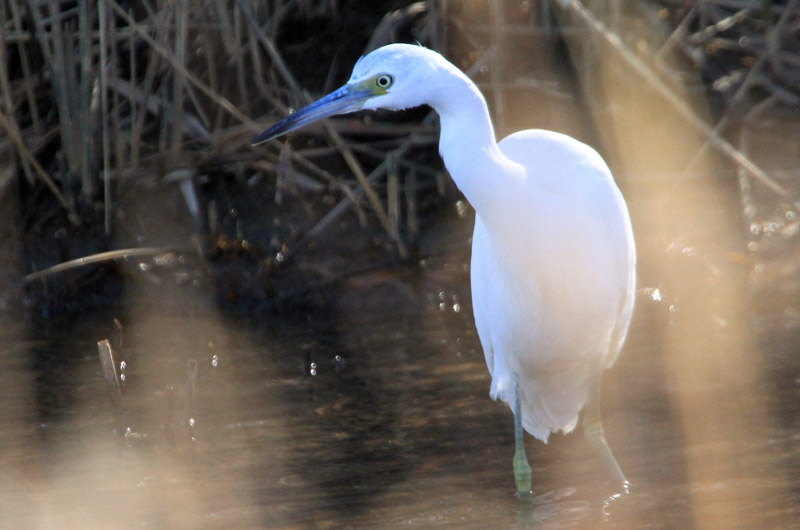Selena Roman observed an immature little blue heron at Albert’s Pond in West Tisbury. This species mostly breeds in the southeastern United States, but is an occasional breeder in the northeast although it is not known to nest on the Vineyard.
On August 11, I heard a familiar sound in my yard: “chick-brrr.” It was an adult male scarlet tanager, high up in an oak tree. These tanagers nest on the Island, especially up-Island, in moist forests and along the north shore. But we have not seen them in our yard for about 10 years, and those old sightings were in the spring when it was feasting on caterpillars during the previous cycle of caterpillars defoliating our oak trees.
What do these two sightings have in common? They are both exhibiting what is called post-breeding dispersal; movements after the breeding season that are not in the direction of their normal southward migration.
Little blue herons and other egrets are frequent practitioners of post-breeding dispersal. They may visit the Vineyard from as far away as New Jersey and Delaware before starting their southward migration. Ornithologists believe that this helps them find new and suitable habitat where they may breed in future years.
The scarlet tanager probably does not disperse that far, but like other songbirds, they may disperse up to 12 miles from where they nest. So the tanager in my yard may (or may not) have been from up-Island.
Wood thrushes exhibit post-breeding dispersal. They nest in mature woodlands across the Island. After their chicks leave the nest, they all move to stands of thick shrubs. My favored place to see wood thrushes is at Fulling Mill Brook, where they nest in the woodlands. They then move to dense shrubs closer to the brook itself. Or maybe the thrushes that are now near the stream actually came from much further away.
Ruby-throated hummingbirds are another example of post-breeding dispersal. Your recently seen hummers may not be the same ones that you had during the breeding season. And their migration is about to start, so they could also be migrants from further north.
Recoveries of banded birds are needed to distinguish between breeding, post-breeding dispersal and migrating birds.
Bird Sightings
Charlie Kernick observed a downy woodpecker using a tool on August 15. The downy took a sunflower seed and wedged it into a crack on a cedar post, then hammered away at it with his beak to break the seed open. Charlie “knew they were smart, but never knew they were THAT smart.” They are, and it is not just woodpeckers; chickadees, nuthatches and titmice will also use their beaks to open seeds they put in a crevice, or hold the seed in their feet.
The same shorebirds that were here last week are still around, with perhaps semipalmated plovers being the most common. I will mention the highlights in this column. Warren Woessner, Soo Whiting, Flip Harrington and Ken Magnuson teamed up to bird the mudflats along the south shore of Tisbury Great Pond on August 16. Their best finds were seven red knots and a juvenile hooded merganser. The early waterfowl migration is underway. The closest they breed is in central Massachusetts.
Norton Point Beach is another great place for shorebirds. Ken Magnuson reports a red knot and short-billed dowitcher on August 15. On the morning of August 15, I saw at least 1,000 terns on Norton Point, covering a long stretch of bay-side shoreline across from and eastward of the boat-launch ramp off Edgartown Bay Road. From the boat ramp, I was too far away to identify most of them, but there were both common and roseate terns there. A slow trickle of terns continued to arrive from the direction of Edgartown Harbor, while others were leaving to the south. Almost all of the terns were gone the next morning.
Luanne Johnson reports that the black skimmers have moved from Little Beach to Norton Point. Which is where they were a couple of years ago before they moved to Little Beach.
Ron Slate observed an eastern kingbird on August 15 in his Aquinnah yard.
Sarah Mayhew observed and photographed a young barn swallow being fed while in flight! At first she thought the two were fighting, but seeing the photos on the computer showed otherwise.
Also on August 16, John Ripley Stanwood found a common loon foraging in the Menemsha channel.
There are lots of birds around, so please get out looking for them, and be sure to report your bird sightings to birds@mvgazette.com.
Robert Culbert leads Saturday morning guided birding tours and is an ecological consultant living in Vineyard Haven.





Comments
Comment policy »